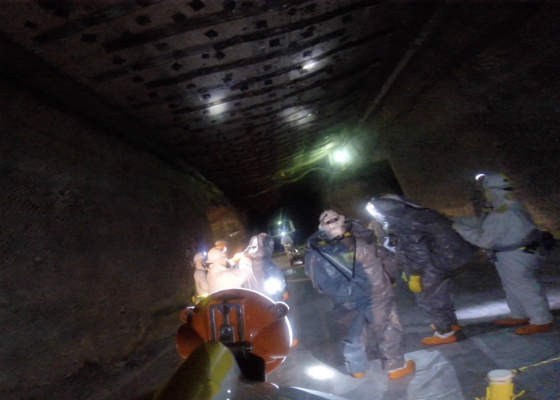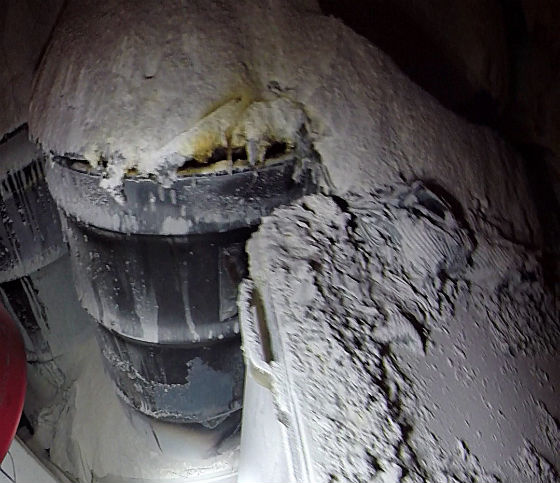June 27, 2014
Centers for Disease Control and Prevention
Excessive alcohol use accounts for one in 10 deaths among working-age adults ages 20-64 years in the United States, according to a new report. Excessive alcohol use led to approximately 88,000 deaths per year from 2006 to 2010, and shortened the lives of those who died by about 30 years. These deaths were due to health effects from drinking too much over time, such as breast cancer, liver disease, and heart disease; and health effects from drinking too much in a short period of time, such as violence, alcohol poisoning, and motor vehicle crashes.

A new report finds that excessive alcohol use accounts for one in 10 deaths among working-age adults ages 20-64 years in the United States.
Excessive alcohol use accounts for one in 10 deaths among working-age adults ages 20-64 years in the United States, according to a report from the Centers for Disease Control and Prevention published June 26 in Preventing Chronic Disease.
Excessive alcohol use led to approximately 88,000 deaths per year from 2006 to 2010, and shortened the lives of those who died by about 30 years. These deaths were due to health effects from drinking too much over time, such as breast cancer, liver disease, and heart disease; and health effects from drinking too much in a short period of time, such as violence, alcohol poisoning, and motor vehicle crashes. In total, there were 2.5 million years of potential life lost each year due to excessive alcohol use.
Nearly 70 percent of deaths due to excessive drinking involved working-age adults, and about 70 percent of the deaths involved males. About 5 percent of the deaths involved people under age 21. The highest death rate due to excessive drinking was in New Mexico (51 deaths per 100,000 population), and the lowest was in New Jersey (19.1 per 100,000).
"Excessive alcohol use is a leading cause of preventable death that kills many Americans in the prime of their lives," said Ursula E. Bauer, Ph.D., M.P.H., director of CDC's National Center for Chronic Disease Prevention and Health Promotion. "We need to redouble our efforts to implement scientifically proven public health approaches to reduce this tragic loss of life and the huge economic costs that result."
Excessive drinking includes binge drinking (4 or more drinks on an occasion for women, 5 or more drinks on an occasion for men), heavy drinking (8 or more drinks a week for women, 15 or more drinks a week for men), and any alcohol use by pregnant women or those under the minimum legal drinking age of 21. Excessive drinking cost the United States about $224 billion, or $1.90 per drink, in 2006. Most of these costs were due to lost productivity, including reduced earnings among excessive drinkers as well as deaths due to excessive drinking among working age adults.
To estimate deaths due to excessive drinking, CDC scientists analyzed data from the Alcohol-Related Disease Impact (ARDI) application for 2006-2010. ARDI provides national and state-specific estimates of alcohol-attributable deaths and years of potential life lost. ARDI currently includes 54 causes of death for which estimates of alcohol involvement were either directly available or could be calculated based on existing scientific information.
"It's shocking to see the public health impact of excessive drinking on working-age adults," said Robert Brewer, M.D., M.S.P.H., head of CDC's Alcohol Program and one of the report's authors. "CDC is working with partners to support the implementation of strategies for preventing excessive alcohol use that are recommended by the Community Preventive Services Task Force, which can help reduce the health and social cost of this dangerous risk behavior."
The independent HHS Community Preventive Services Task Force recommends several evidence-based strategies to reduce excessive drinking. These include increasing alcohol taxes, regulating alcohol outlet density, and avoiding further privatization of alcohol retail sales.
For more information about excessive drinking, including binge drinking, and how to prevent this dangerous behavior, visit the CDC's Alcohol and Public Health website at http://www.cdc.gov/alcohol/index.htm. Members of the public who are concerned about their own or someone else's drinking can call 1-800-662-HELP to receive assistance from the national Drug and Alcohol Treatment Referral Routing Service.
For state-specific estimates of deaths and years of potential life lost due to excessive drinking by condition, visit the ARDI online application at https://apps.nccd.cdc.gov/ardi/HomePage.aspx.










